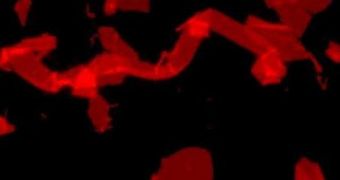A collaboration of scientists from the US Department of Energy's (DOE) Lawrence Berkeley National Laboratory (Berkeley Lab) announces that it has observed for the first time the mechanisms that slim sheets of protein-like structures use in order to self-assemble.
By emulating and replicating this process, it may soon become possible to enable a wide array of potentially-groundbreaking applications. Some of these may include for example the creation of new sensors, filters, and templates used for the creation of other nanoparticles and nanostructures.
The most important finding made in the new study is that these thin films only develop on the surface of a liquid if the vial that contains it is shaken, and not stirred. This is such a minute difference in approach that the researchers themselves are surprised they did not think of it sooner.
By applying this approach, it may soon become possible to scale up the production of two-dimensional nanosheets made up of a variety of materials. “Our findings tell us how to engineer two-dimensional, biomimetic materials with atomic precision in water,” expert Ron Zuckermann explains.
“What’s more, we can produce these materials for specific applications, such as a platform for sensing molecules or a membrane for filtration,” adds the expert, who is the director of the Biological Nanostructures Facility at the Berkeley Lab Molecular Foundry.
The investigators has years of experience in researching synthetic polymers called peptoids. These compounds have the ability to act just like natural proteins, but do not biodegrade like their organic counterparts.
“Knowing the mechanism of sheet formation gives us a set of design rules for making these nanomaterials on a much larger scale,” explains Babak Sanii, who is a Berkeley Lab postdoctoral researcher in Zuckermann's lab.
In the new experiments, the team was able to construct a new device – the SheetRocker – to be be used for shaking the mixtures in order to produce self-assembling peptoid layers. The tool also enables extremely precise control over the process of compressing the air-water interface.
“During shaking, the monolayer of peptoids essentially compresses, pushing chains of peptoids together and squeezing them out into a nanosheet. The air-water interface essentially acts as a catalyst for producing nanosheets in 95% yield,” Zuckermann says.
“What’s more, this process may be general for a wide variety of two-dimensional nanomaterials,” he concludes. The work is published in the latest issue of the esteemed Journal of the American Chemical Society (JACS).

 14 DAY TRIAL //
14 DAY TRIAL //